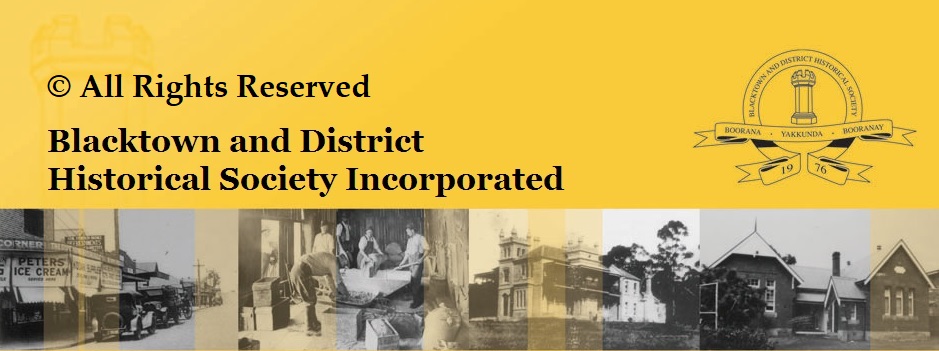
Quarterly Journal Winter 2013 – Page 3-6
by
Grace English & Neil Smith
After our marriage in 1949 my husband, Harold English, began building our home at 237 Hill End Road, Doonside. He made concrete blocks through the day and well into the night, laid the foundations and built the house with concrete floors, walls and roof. Our family lived in a garage on site whilst the building came into being.
Harold had a vast knowledge of architectural styles and worked as an architectural modeler for Australian Plaster Industries. The building design is balanced using different periods of architecture as features in the doors, windows and ceilings to start with. You can see polished timber doors in a Gothic shape, window frames in English Tudor style. The doorways and windows have quoins around them giving a stone building look. Where the walls meet the ceiling is a flat cornice with Roman classic pattern runs around the walls. When you enter the building, you are flooded with light coming through a skylight. The dome skylight in the dining area is a high-quality feature. A parapet wall hides the roof and skylights.
The house has been described as an Eclectic Folly, The Castle or The Haunted House. Our home is now surrounded by suburbia from 1980s housing development.
Since 2000 my son Arthur and his wife have done a lot of work to restore the house. They have replaced the fiberglass dome skylights in the lounge room with polystyrene light diffusers, repaired concrete cancer, waterproofed the roof, patched up water-damaged plaster work, had skirtings from molded MDF made, arranged to have new front doors to replace the fiberglass and wooden doors which did not stand up to the weather, painted both inside and out and did many things to improve the condition of the house.
The land that Harold and Grace purchased was part of Joseph Bigg’s 1823 land grant. He was the owner of 300 acres (120 hectares) around the same time Robert Crawford received his 2,000-acre (800ha) which grant he called Hill End. Both grants were made at the end of Macquarie’s governorship and were excised from the old Rooty Hill government stock farm. Bigg arrived in Australia in 1809 on the Dromedary and was one of Macquarie’s coachmen. The only stain on Bigg’s record occurred in October 1817 when a curricle (a two-horse sulky) he was driving killed a young child in George Street, Sydney.
When the Macquarie’s left Sydney, Bigg chose to stay, receiving a grant of 300 acres (120ha) at a time when an emancipated convict would normally receive 30 to 50 acres (12 to 20ha) in the Blacktown district. Bigg established a livery stable in Phillip Street in Sydney which he operated until his death in 1833, aged 65. His grant may have been used as horse property for his Phillip Street stable. The Crawfords of Hill End purchased Bigg’s land and enlarged their estate. ‘Doonside’ was being used by auctioneers Hardie & Gorman as the name for the railway siding in the 1885 subdivision auction of the Hill End Estate. The subdivision saw Hill End Road opened from the railway station to Power Street. The land from Power Street to Richmond Road was mainly Joseph Bigg’s old grant, now split between the Crawfords’ three grandchildren.
Harold and Grace English’s block of land was previously owned by Lindsay Crawford who ran a poultry farm. In 1923 the Intercolonial Investment Land and Building Company purchased almost half of the Bigg grant but did not develop it. In 1945 Melbourne widow, Minnie Demeral, purchased 9 acres (3.6ha) from Intercolonial. Within a year she had sold to Samuel James Loarne who subdivided his land and soon after sold Lot 3 to Harold and Grace English.
More information – Contact Blacktown & District Historical Society – Website
